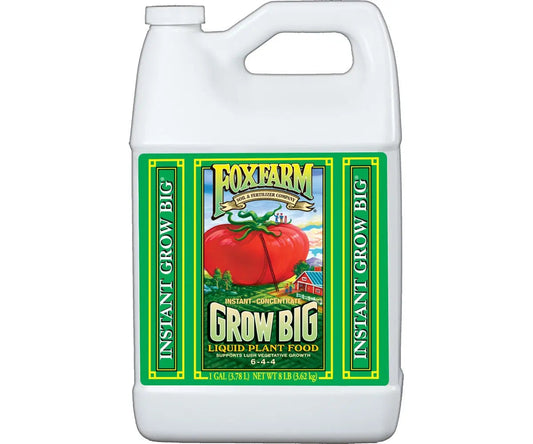The Forgotten Practice of Agroforestry
Agroforestry is one of the keys to a sustainable future. It is necessary in order to foster and rebuild ecosystems, boost biodiversity, support rural economies and feed people in a changing world. It will assist the worldwide agricultural crisis by rebuilding its environmental foundation. “Traditional” farming is the farthest thing from traditional.
The world is facing an existential crisis when it comes to feeding an exponentially
growing population. Per the Food Aid Foundation, around one in nine people do not have enough food to live a fulfilling lifestyle, and one in three suffer malnutrition in one way or another (“World Hunger Statistics”). It is evident that food is not grown and distributed efficiently, which is proven further by the amount of food that is wasted. According to the USDA, the United States’ “food waste is estimated at between 30-40 percent of the food supply”, contributing heaps to the problem at hand. The problem remains that “Land, water, labor, energy and other inputs are used in producing, processing, transporting, preparing, storing, and disposing of discarded food… Wholesome food that could have fed families in need is sent to landfills” (“Food Waste FAQs”). More energy is used in discarding food waste than in efficiently feeding a hungry population, contributing to hunger and worsening environmental issues.
The world is more than just hungry: it is weak, brittle, and reaching a tipping point. Since the start of the industrial revolution, the average world temperature has risen. However, if that temperature reaches 1.5 degrees celsius or greater by 2030, the already fickle world may finally crack under the pressure. In other words, “It’s about the point where we’ll likely see many natural systems begin to cross dangerous points of no return, triggering lasting changes and transforming life as we know it” (“Why is 1.5 Degrees the Danger Line For Global Warming?”). Without these natural systems, there is no fertility. Life is fertile, and so is soil. Soil is alive, and lifeless soil is dirt. A desertified world provides no yield, which is why 1.5 degrees Celsius must be mitigated. Reflectors such as Air Cooled Reflector, Sun System SE Reflector, and Wing Reflector can be utilized to reduce the temperature thereby hastening agricultural production. Agriculture is the catalyst of human society; it is the direct link between society and the natural world and is an indicator of its health. The majority of society has shifted away from these roots. However, “More than 4 billion people – more than half of the world – live in urban areas” (Ritchie and Roser). With such a dense population living in cities and buying food from shelves, it is easy to forget where that food comes from and how it was produced, which numbs the consumer to the ugly face that is industrial farming.
Industrial agricultural practices such as monoculture are the bane to healthy natural systems and are connected directly to cumbersome economic impacts. Large industrial farms are a result of vertical integration. They monopolize the rural economy and force out small-to-medium-sized farms. In doing this, powerhouse companies have promised efficiency and sustainable action: “From its mid-20th century beginnings, industrial agriculture has been sold to the public as a technological miracle. Its efficiency, we were told, would allow food production to keep pace with a rapidly growing global population, while its economies of scale would ensure that farming remained a profitable business” (“The Hidden Costs of Industrial Agriculture”). The truth is that farming is no longer profitable, and the externalities caused by industrial farming are expensive and far from sustainable (“The Hidden Costs of Industrial Agriculture”). The pollutants alone cause huge financial loss to neighboring communities, even those hundreds of miles away. Constant land clearing, soil tilling, pesticide and fertilizer use, and single-crop planting are a perfect storm for a dead landscape, which renders useless to any form of agriculture. This imbalance occurs simultaneously with rural economies, as the costs “are picked up by taxpayers, rural communities, farmers themselves, other business sectors, and future generations… [causing] damage with an annual price tag in the billions” (“The Hidden Costs of Industrial Agriculture”). It is necessary to view the situation as a delicately balanced cairn where removing the foundational stone will cause the rest of the pile to topple. In essence, if the environment goes down, the economy and societal well-being will go down with it.
The reader may be convinced at this point that agriculture is evil. While it is clear that agriculture is the center of many issues when practiced irresponsibly, it also holds great potential. The capacity for the worst may also imply the potential for the best.
The most popular alternative to industrial farming is going organic. Organic farming is upheld by strict guidelines where practically no artificial inputs are used and land and habitat management is encouraged. Rob Percival, head of policy at the Soil Association, claims organic farming can feed the world and sustain future populations. He states, “when the environmental and other damage caused by high energy and chemical inputs in non-organic farming are factored in, organic food is cheaper for society and better for the planet”, fecundating the nature of organic growing (Harvey). With that said, it sounds counterintuitive not to farm this way. The effects of hundreds of millions of pounds of harmful chemicals would be negated each year if every farmer in the US converted to organic (Chait). Unfortunately, only a small percentage of products sold are organic, which calls for a rather large and rapid paradigm shift. Percival also claims “We need an urgent shift in both production and consumption if we’re to avert the worst consequences of climate change”. The proposition is very possible, but many people will have to change their lifestyle in order to achieve these goals and protect the greatest commons of all: Earth. The call to action is now, farmers need to assume an active role in changing the land for the better.
Instead of using chemical fertilizer and pesticides as promoted by industrial agriculture, the use of organic pesticides along with organic fungicides can be promoted. Proper use of potting soil, coco fiber, and hydroponic substrate can also be promoted for bettering the mode of organic farming.
Embracing the ideals of farming organic, regenerative agriculture is a method of
permaculture that considers the environment upon planting. It holds that there is no waste in natural systems, only transfer of energy from one state to another- one organism to another, all within a closed loop. Hudson Hemp, a leading regenerative- organic farm in the Northeast, claims “The principal goal of a regenerative agricultural system is to build and maintain the soil’s ability to recycle nutrients, to capture and hold water, and minimize the farm’s dependence on outside inputs… going beyond sustainability to actually replenish ecosystems, nurture biodiversity, and sequester carbon.” (“The Regenerative Future of Farming”). Neither organic nor regenerative farming requires more land clearance, just land conversion. It is used in alignment with organic farming in order to foster the land and produce for the populace. It is a double-edged sword that has the potential in itself to solve both the world hunger crisis and the impending environmental disaster while saving the rural economy. Organic and regenerative
farming are sustainable and ethical alternatives to growing food, but may still utilize certain aspects of traditional agriculture. Agroforestry pushes the envelope past traditional agriculture and creates its own lane. Within the context of agroforestry, the use of peat moss, biochar, etc. are promoted.
Agroforestry is a sustainable branch of permaculture that involves both organic and regenerative agriculture while diverting as far from traditional agriculture as possible. It is defined as “A practice combining trees, shrubs, crops and livestock, using agricultural and forestry techniques to recreate the natural ecosystem of the land” (“Different Types and Benefits of Permaculture”). Also known as “The intentional integration of trees and shrubs into crop and animal farming systems to create environmental, economic, and social benefits”, it considers land as a dynamic, closed-loop, ecological system that has the ability to solve the greatest problems facing farmers today (“Forest Farming”). The opposite of monocropping, agroforestry is a well-managed forest that embraces the rhythm of nature instead of trying to disrupt it. Those trained in Agroforestry are taught to analyze a given environment from an ecological perspective and decide what is needed in order to support local flora and fauna populations while sustainably producing useful products or services. Comparable to a pocket knife, agroforestry combines the different practices of sustainable farming (organic, regenerative) to make it an all-in-one tool.
One of the most primitive, yet forgotten forms of agriculture, agroforestry has been utilized by native peoples long before the onset of “traditional” farming. The Native Americans had agroforestry down to a science, utilizing fire for controlled burns in order to achieve maximum natural output. Professor Lieberman, past Director of the Cornell Tree Crops Research Project and Landscape Ecology professor at Cornell, stated:
The benefits of low interval burns are bountiful to both the human population and the natural ecology of these areas. The burns would return organic matter to the soil from fallen, sick, or dead trees much faster than the natural decomposition process. The humus would then be stocked with minerals leached from the ash, otherwise found in much lower concentrations in the absence of the burns (Lieberman). Improved soil content means improved vegetative products.
The systematic burning did more than improve soil content, it mitigated both human and plant pathogens. Without modern medicine, one could imagine the ease at which disease could be contracted and spread. Because of this, a “reason that the Indians often moved their villages was… to avoid fleas and lice which had come to infest [them]” (Lieberman). The pests had proven burdensome, and soil burning would come in handy not only in restoring soil nutrients for new growth but also in controlling these vermin. Lieberman says “Burning would… destroy insects and arthropods such as ticks, fleas, chiggers, and lice which live on the ground surface when not parasitizing an animal host”. The fires would control pest populations, allowing a level of comfort within communities from reduced pathogenic transmission. This would naturally allow more permanent settlements. The local plant species also benefited from burns, as “Moist conditions are needed for the build-up of inocula for many plant diseases [35]... Burning would destroy inocula on grasses and shrubs, and would temporarily create drier conditions on and near the ground surface” (Lieberman). The dryness caused by the fire would disrupt a pathogen's ability to overcome the immunity of a host plant, making it more difficult for plant diseases to evolve and spread. Controlled, low interval burning is an integral aspect of agroforestry and plays a huge role in both human and environmental health.
Along with burning, natives used their knowledge of the land to utilize methods of sequential and simultaneous forestry to achieve maximum vegetative output. Shifting cultivation, or sequential forestry, is a practice used by organic farmers, regenerative farmers, and foresters alike in order to allow nutrients to re-enter the soil and avoid desertification. Lieberman claims “sequential agroforestry systems [were practiced] on level, alluvial soils where they grew annual crops of corn, squash, and beans, as well as perennial crops of berries”. This system was done with controlled burns where sites would be left uncultivated for up to 20 years (Lieberman). Simultaneous agroforestry is closer to the textbook definition of forestry, where it “involved manipulating the forest environment to shift the species composition in the direction of more food-producing shrubs and trees, and to increase the productivity of these species” (Lieberman). This was also done through burning, where the low-level burns would clear out weak or undesirable trees and plants, making room for a larger canopy. A larger canopy would, in turn, “increase the productivities of all plants… [as] Widely spaced trees with full, deep crowns are generally known to produce more fruit (nuts) than trees in closed canopy forest stands” (Lieberman). The natives tailored the environment to their advantage in order to increase desired yields instead of completely destroying it for an unnatural and unsustainable system.
The reintroduction of these agroforestry systems is rehabilitating North American forests and waterways. The Karuk and Yurok tribes in the Pacific Northwest have partnered with University of California Berkeley, University of California Davis, and the U.S. Forest Service to restore the ecology of their ancestral lands (MacFarland and Rossier). The tribes “rely on forest foods… [and] intend to enhance plant and animal populations for future generations rather than exploit these precious natural resources for personal economic gain” (MacFarland and Rossier). Understanding that the greatest investment is the future, they are using these ancient techniques to rebuild the ecosystem to the point where it can once again sustain itself and the humans entwined within it. A thriving natural environment means a thriving economic-social
environment.
Agroforestry is an ancient practice, but that does not mean it has reached an evolutionary dead end. Another case study was conducted in Western Kenya on whether or not agroforestry can restore soil health and contribute to the growing populace. The authors claim “Agro-forestry emerged as an alternative strategy to replenish soil fertility… Detailed field and case studies show that people are indeed convinced that agroforestry helps them to replenish soil fertility and that over the years yields indeed have increased” (Hebnick and Mango). Agroforestry was introduced in this region in the 1990s and has since flourished. Not only does rudimentary agroforestry benefit the area, but it also has room for improvement, which entails a high ceiling for advancement. When discussing growth potential, “Practices based on fertilisers, agro-forestry and manure all co-exist. This heterogeneity is continuously produced and reproduced, providing (at least theoretically) a breeding ground for continuing experimentation and the enrichment of knowledge” (Hebnick and Mango). The authors’ claim gives way to the notion that agroforestry is in one of many stages of iterations where the design process is nowhere near complete, if ever. Like the butterfly effect, agroforestry has the potential to change the face of the Earth one hundred years from now in the opposite way industrial agriculture has changed it one hundred years since its beginning. The way industrial agriculture “advanced” into an unsustainable, unethical, and unhealthy entity today is the same way agroforestry can advance into what it will become one hundred years from now. Industrial agriculture’s ceiling has been reached, agroforestry’s ceiling cannot be seen from the floor.
Agroforestry is one of the leading options when deciding which route to take for a
sustainable future. It fosters environmental health, which upholds societal well being and economic success. Without it, the latter would crumble. One of the first methods of harvesting, agroforestry can be used to combat the evils industrial agriculture has created.


























Leave a comment
Please note, comments need to be approved before they are published.